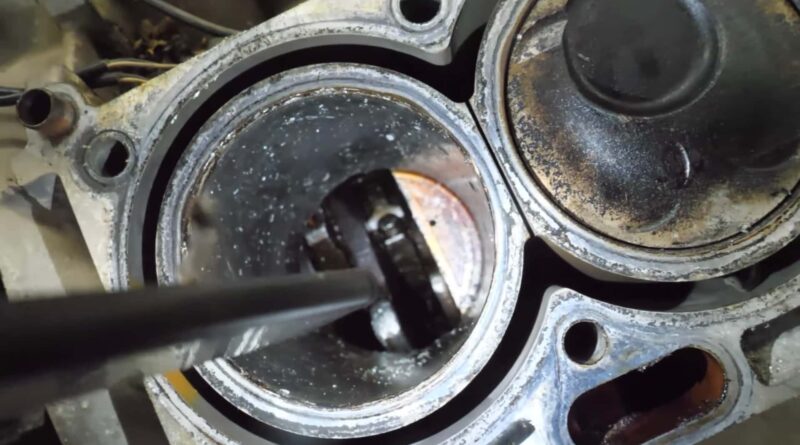A Piston In This Ford EcoBoost Engine Turned Into A Grenade
The internal combustion engine is amazing when you think about the mechanical complexity that drives a vehicle down the interstate at 75 miles per hour or even more. However, when something goes wrong with all of those moving parts, there can be catastrophic consequences. For example, check out this Ford EcoBoost turbocharged 3.5-liter V6 with an exploded piston.
This engine came out of a 2012 Ford F-150 with over 200,000 miles. The owner bought the truck at auction and later noticed a ticking sound from the powerplant. He tried to fix it, but the repair apparently didn’t work because the piston exploded.
The damage is immediately obvious because there are big holes in the engine block. The opening on one side is big enough to fit your hand in. Things don’t even start well for this engine. Removing the spark plugs reveals that the electrode on one of them is gone.
Taking off the intake cover reveals even more damage. The valve for one of the cylinders has its guide exposed, which isn’t something you should be seeing. Plus, there’s a hunk of piston at the bottom of the engine when the timing cover comes off. Removing the oil pan provides a spectacular view of the carnage. There are palm-sized pieces of the piston and connecting rod in there, in addition to lots of finer pieces of metal.
We ultimately learn that in addition to the piston catastrophically failing, the connecting rod also sheared away from the crankshaft. In the process of the various bits flying around the engine, the side skirt of another piston was damaged. Given the carnage, it comes as no surprise that many valves are severely bent.
What caused this epic engine failure? Eric from the I Do Cars YouTube channel isn’t sure. He doesn’t think it’s an oil starvation issue, and the engine jumping time doesn’t make sense because the bulk of the harm wouldn’t be to a single cylinder.
Let us know in the comments if you have any theories about what could cause this damage to an EcoBoost engine.
Source: Read Full Article



